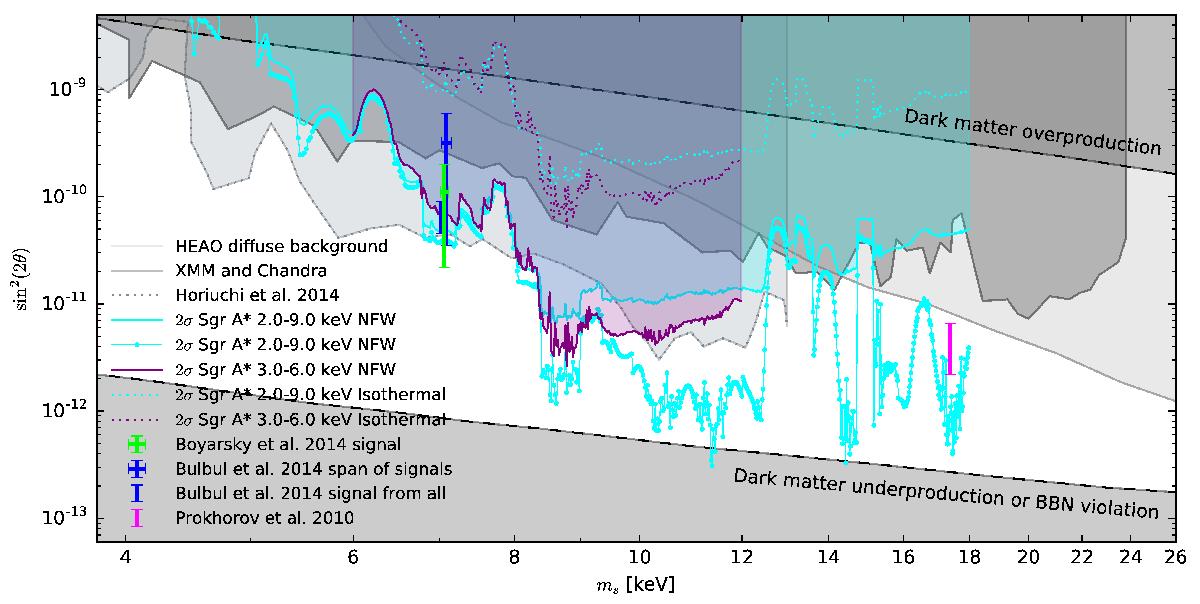Fig. 7

Mass-mixing angle constraints on sterile neutrino like dark matter candidates. Above/below the dashed black lines the sterile neutrinos will be over/under produced relative to the observed dark matter density (Laine & Shaposhnikov 2008; Canetti et al. 2013b). The grey shaded regions are X-ray exclusion lines from XMM-Newton and Chandra observations (Boyarsky et al. 2008a, 2006a; Riemer-Sørensen & Hansen 2009) with the Boyarsky et al. (2008a) constraints rescaled by a factor of two due to mass estimate uncertainties as recommended in Boyarsky et al. (2009b). The cyan and purple regions are the parameter space ruled out by the present Sgr* analysis assuming an NFW profile for the Milky Way halo. The cyan lines are for the case where the entire 2–9 keV interval is modelled, and the purple lines are for the 3–6 keV interval. The dashed lines are for the isothermal profile where the constraints are weakened by an order of magnitude. The dotted grey line show the constraints from Horiuchi et al. (2014) for which the model contains some lines of astrophysical origin. The green error bar is the signal from Boyarsky et al. (2014), and the blue error bars represent the signal from Bulbul et al. (2014) with the small range indicating the best fit to the entire stack of spectra. The larger bars indicate the range of results from their different analyses. All the inferred signals are ruled out at 95% confidence under the NFW assumption.
Current usage metrics show cumulative count of Article Views (full-text article views including HTML views, PDF and ePub downloads, according to the available data) and Abstracts Views on Vision4Press platform.
Data correspond to usage on the plateform after 2015. The current usage metrics is available 48-96 hours after online publication and is updated daily on week days.
Initial download of the metrics may take a while.


